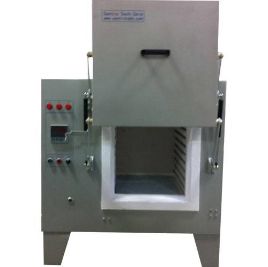
What Is Glass Viscosity?
Viscosity is the measure of a liquid's fluidity and can be determined through its resistance to a motion under an applied force. It can also be explained as the thickness of a liquid. We calculate viscosity by dividing shear rate (the measure of change in the speed at which intermediate layers move in respect to one another) by shear stress (the force per unit area required to move one layer of fluid in relation to another). The result is expressed in a poise (P) increment, which is the equivalent of 0.1 Pa∙s (pascal sound).
Is Glass Viscous?
The viscosity of glass varies inversely with its temperature. As glass is heated, its viscosity decreases, allowing it to flow more easily. The thermal energy produced causes structural molecules to move faster and break the bonds between said molecules. As the temperature decreases, glass viscosity increases and causes the structural bonds to reform.
The relationship between temperature and glass viscosity is linked directly to the glass' chemical composition. Manufacturers must understand techniques to measure and model this relationship for various glass compositions and temperatures. For example, the viscosities of most commercial glasses, like soda lime and borosilicate, tend to measure between 800°C and 1400°C.
Why Is Viscosity Important?
When using a high-temperature furnace for glass manufacturing, measuring viscosity is essential for a sturdy final product. The temperature and viscosity of glass significantly affect its other physical properties, such as softening, melting and crystallization. Knowing the relationship between temperature and glass viscosity is the key to determining the correct melting point and heat treatment regimes used in glass production and processing.
Manufacturers monitor temperature and glass viscosity throughout manufacturing processes to predict how the glass will behave. For example, glass naturally forms microscopic crystals as it cools. Each molten glass mixture has a specific point called the liquidus temperature, at which it is highly vulnerable to crystallization through the bonding of oxygen and silicon atoms. If crystallization through improper viscosity measurement happens while making a product like ultra-pure optical glass, an entire batch may be ruined.
Glass viscosity can also directly affect refractory corrosion and the ability to homogenize. Additionally, the viscosity of glass allows manufacturers to determine how the glass will perform during the final forming process, such as casting parts, fiber generation and spheroidization.
Sentro Tech Makes Measuring Viscosity Easy With Glass Ovens & Annealing Furnaces
When you need precise temperature control for your glass manufacturing processes, look to Sentro Tech. Our high-temperature glass furnaces and annealing ovens offer complete control to achieve a perfect glass viscosity with every final product. Don't let your final products break under strain. Shop Sentro Tech today.
Shop Annealing Ovens
How Is Viscosity Measured?
Glass workers and manufacturers use a specialized tool called a >viscometer when measuring viscosity. Most viscometers compare an entirely stationary object to a flowing fluid, or a moving object and a flowing fluid, and calculate the drag resistance between the two. One can use a wide range of viscometers and viscosity measurement techniques to measure glass viscosity.
Rotation Viscometers
These instruments are commonly used to measure viscosity in the range of 1 to 104 Pa·s through a platinum alloy spindle immersed in a crucible of molten glass. The spindle torque or crucible is rotated and then measured to calculate the viscosity of the glass.
Falling Sphere Viscometers
Falling sphere viscometers measure glass viscosity in the 1 to 106 Pa·s range. They work by measuring the time taken for a falling sphere of known density to move between two points. This method of measuring viscosity utilizes Stoke's Law, which considers the drag force on a falling sphere.
Parallel Plate Viscometers
These viscometers measure the rate of change in thickness of a cylindrical object between two parallel plates moving perpendicular to a common central axis. This measurement method is often used to measure viscosity in the 105 to 108 Pa·s range.
Fiber Elongation
When using a fiber elongation method, the elongation rate of a fiber of known dimensions is measured under a known load. This viscosity measurement technique can be used for ranges of 105 to 1012 Pa·s and is one of the more common methods for determining Littleton softening and annealing reference points.
Beam-Bending
The beam-bending method is commonly used for transformation range viscosities of 108 to 1013 Pa·s. Beam-bending is a technique in which the rate of viscous bending of a loaded glass beam is measured over an extended period.
Buy a Sentro Tech High-Temperature Furnace to Perfect Your Glass Viscosity Today
Now that you understand the importance of glass viscosity and know some viscosity measurement techniques, it's time to start manufacturing processes with a high-temperature glass furnace from Sentro Tech. Glass manufacturing is a highly regulated and intricate process that relies on precise temperature control for accurate, rapid heating and viscosity measurement.
At Sentro Tech, we carry a wide range of annealing ovens and high-temperature furnaces to deliver total consistency and complete uniformity. With a double-shell design, fiberboard lining and programmable temperature control up to 1800°C, every furnace in our catalog offers efficiency and total temperature control for the perfect glass viscosity. Browse our entire catalog today.
Contact Us



